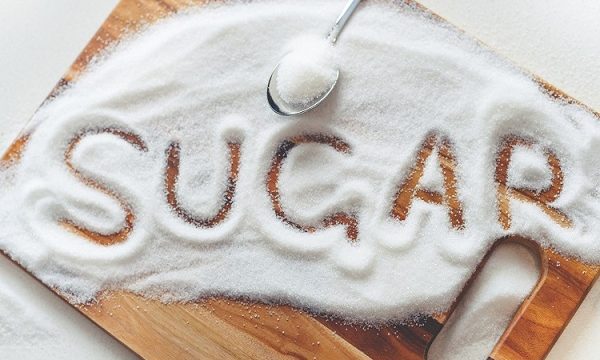
This article has been provided for use by the Australian Dental Association and the original article can be found here.
Sugar is one of the biggest factors that can contribute to the development of tooth decay. The World Health Organization (WHO) recommends adults consume only six or less teaspoons (approximately 24 grams) of free sugar to decrease their risk of tooth decay and unhealthy weight gain.You will see the term free sugar used above. Here are various descriptors used for sugar.
Added sugar
Sugar added to food and drink products during processing, manufacturing or at the time of consumption, for example adding sugar to your tea or coffee or sprinkling it over your breakfast cereal.
Free sugar
This includes added sugars, as well as the sugar naturally present in honey, syrups, fruit juice and fruit juice concentrate.
Natural sugar
Sugar that is part of the natural structure of food products, including vegetables, fruits (fructose) and dairy (lactose).
Can natural and added sugar effect my teeth the same?Yes. However, foods such as fruit and milk are made up of small amounts of natural sugars as well as fibre, vitamins, and minerals which are good for the body. Milk also includes calcium, which can help to protect the teeth and bones.
Processed foods with large quantities of added sugar often have no or limited nutritional value.
Hidden sugars
Many people think of sugar as the white granules that we spoon into our coffee and tea or add to baking recipes. But sugar comes in many forms. Both added and free sugars can contribute to tooth decay.
Sugar can be called over 50 different names, making it hard to detect on food and drink labels. These are known as hidden sugars.
_1.png)
Look out for these names on the ingredient list of Nutrition Information Panels when shopping. Even foods and drinks that claim to have no added or refined sugars present can contain a lot of sugar. The closer the ingredient is to the top of the ingredient list, the more of it present in the food or drink.
Recommended daily sugar intake
On average, one can of soft drink contains 10 teaspoons of sugar. This is 1.5 times the recommended daily sugar intake by the WHO, which is 6 or less teaspoons (24 grams) of free sugar per day. This amount is equal to 5% of the average persons daily total energy intake (kJ). Our body uses this energy to keep our body functioning. Kilojoules are the measurement of energy from foods and drinks used in Australia. In some countries, calories are still used as the unit of measure. For reference, 8360kJ = 2000Kcal.
The average adult needs about 8,700 kJ a day to maintain a healthy weight.
Calculating sugar consumption based on 5% of 8,700 kJ* (daily total energy).
5% of 8700kJ
0.05 x 8700kJ = 435kJ
435kJ = 6.3 teaspoons of sugar per day
68kJ (approximate kilojoules in
1 teaspoon of sugar)
*This is based on an average. If you are looking for more information about what if right for you and your health, talk to your doctor or an accredited practicing dietician.
Reading the Nutrition Information Panel
To know how much sugar is in the foods and drinks you purchase, it is best to read the Nutrition Information Panel located on the food label to help you in making a healthy choice.
If you are trying to decide between products based on their sugar content, look at the amount of sugar per 100 grams (g). Using the 100 g column on each product allows you to compare apples with apples. The amount of sugar per serve differs between products as the serving size is set by the manufacturer. If you use the sugar per serve value, you may be comparing apples with oranges instead.
When looking at the 100 g column, it is best to look for foods with 5g or less sugar. Between 5g and 10g is okay but if the product has over 15g of sugar per 100g, it may be best to find a healthier alternative.

Many products will not point out which ingredients are added sugars or the amount of added sugar in the food or drink item. To check for added sugars, it is best to read the list of ingredients, which are usually found at the base of the food label. The higher an ingredient is to the top of the list, the more of it that is present within the item. Remember that sugar can go by over 50 different names. This can make it tricky to identify all the sources of sugar in a food or drink product.
Converting grams to teaspoons
You will often health sugar content in foods and drinks measured by number of teaspoons. This unit of measure can often make it easier to visualise the amount of sugar by picturing and relating it to spoonfuls of sugar.
To work out how many teaspoons make up a quantity of sugar, divide the amount of sugar by 4.

How do I find a healthy option?
Health Star Ratings are a quick and easy way to help you choose healthier packaged foods and drinks.
The Health Star Rating System is a food labelling system used in Australia and New Zealand. It started in 2014. Manufacturers of packaged foods and drinks may choose to put a star rating on the label of their product. The star ratings range from ½ to 5 stars. The rating is made using a calculator that looks at nutrients and ingredients in the food or drink. The higher the stars, the healthier the food or drink is compared similar products. The lower the star rating, the less healthy the food or drink is.
